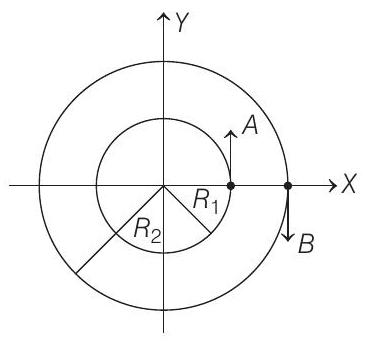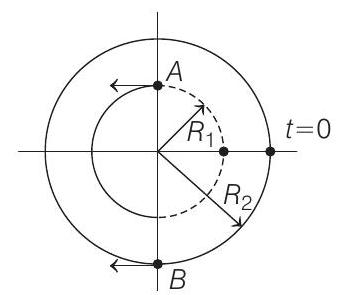Laws of Motion 4 Question 1
1. Two particles
 given by
given by
(2019 Main, 12 Jan II)
(a)
(b)
(c)
(d)
Show Answer
Answer:
Correct Answer: 1. (d)
Solution:
- Angle covered by each particle in time duration 0 to
So, positions of particles at

Velocities of particles at
The relative velocity of particles is






